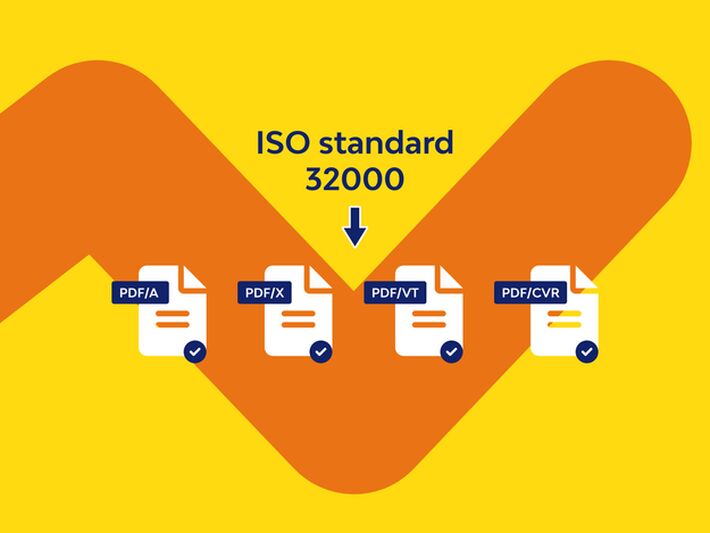As far back as 1993, Adobe released the "Portable Document Format", or as we all know it now: PDF. The file format's roots go back a little further, but it was made freely available to everyone that year. It took until 1996 for it to become a viable format for use in graphics arts.
With its uptake in the print and publishing market with its special requirements, came the need for quality control and standardization. The first preflight software for PDF, amongst which callas pdfInspektor, the predecessor of callas pdfToolbox, hit the market in 1997. It took until 2001 before we saw the first truly international PDF standards with the ISO PDF/X-1a standard and the first version of the Ghent Workgroup specifications.
All in all, the adoption of PDF throughout our industry was remarkably quick, which is a testament to the value PDF brought to print and publishing workflows.
Adoption of standards
So, what about the adoption of those PDF standards? Let's look at the current situation in 2023… The main standards used in our industry today, both from ISO and the Ghent Workgroup (which builds on ISO standards), use PDF/X-1a and PDF/X-4. Those standards were invented in 2001, and 2008 respectively. So, our industry is based on standards that go back 15 to 22 years.
To put that in perspective, 2001 was the year the first Harry Potter and Lord of the Rings movie came out (which neatly shows where my interests are!). The Apple iPhone was invented in 2007; the iPad, which you now may be using to read this, came out in 2010! Yet another way to look at it; we have students graduating from graphic arts courses at university today who weren't even born when one of our industries’ main standards was established.
Why is this the case? There are many PDF features that have been introduced since then that can't be used in PDF/X-4 and even more that are lacking in PDF/X-1a. Are there no more modern standards around that our industry could use? Of course there are, we have a whole new version of PDF itself called ISO 32000-2, and a PDF/X standard, called PDF/X-6, that takes advantage of that. So why are we using standards that are "ancient"?
Conservatism
Probably the most obvious way to answer this question is that we are all rather conservative when it comes to what we use in our industry. And often with good reason – mistakes can be very costly. So, once procedures have been put in place, we tend to stick to them.
In this context, it's worth noting that changing from one standard to another, sometimes isn't just a technical exercise. The change from PDF/X-1a to PDF/X-4 for example, involves real business questions and potentially shifting responsibilities between the different parties in a graphic arts workflow. This certainly slows down such a transition.
Geek speak
Being a solid geek myself, the second reason to point out, makes me somewhat self-conscious because it is the way we "advertise" said standards. Standards, by necessity, are developed by highly technical experts, and used by other highly technical experts who implement them in software and hardware.
This by itself is perfectly fine, and very efficient. The challenge is how we then communicate the importance of those standards to the rest of our industry. For a standard to be adopted, people in production, but also management, need to understand what the standard is about, and what the implications are both of adopting, and not adopting the standard.
I believe we, the experts, often drop the ball there.
Added value
This brings us to the last reason, and arguably the most important. For anything to be adopted in a money-driven industry (which is not a negative statement, but an accurate reflection of what makes businesses tick), there needs to be a business case. The new standard must provide cost savings, and production gains, or open new possibilities and opportunities (and preferably a mixture of all three).
Many of the standards that hit the market, are what I would call "forward-looking". They push the boundaries of what technology is capable of. Such standards often need time for the whole industry ecosystem to catch up with them. Only when that has happened, does it make sense to start using them.
Conclusion?
For all the reasons outlined above, standards are always going to be implemented at what negatively could be described as a glacier pace. And as with most things, this can be both good and bad. Having stability is good. Clinging to old habits, "because that's the way we've always done it" is not good. If there is ever an industry that should realize there more colors than black and white, it is ours!




